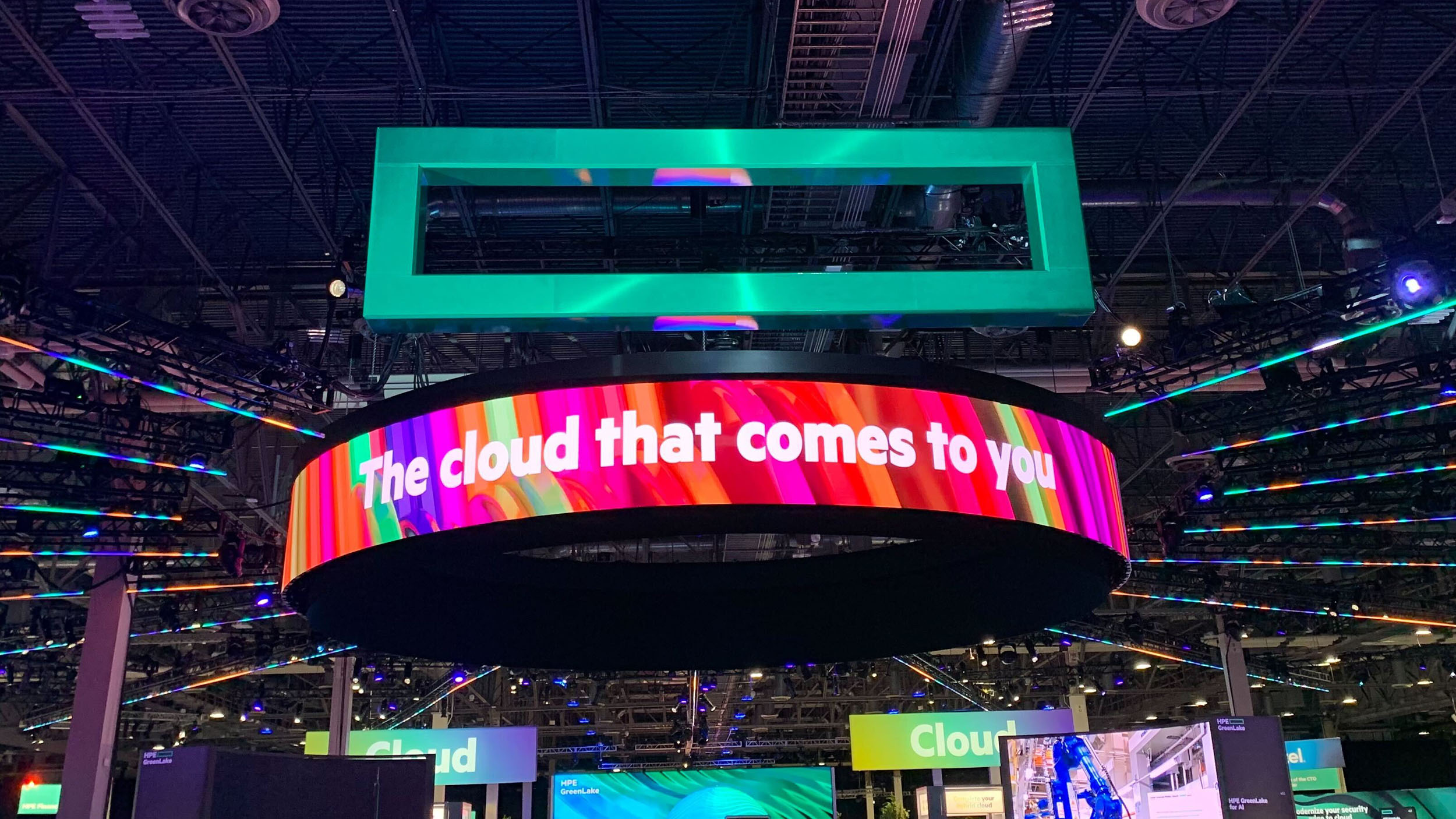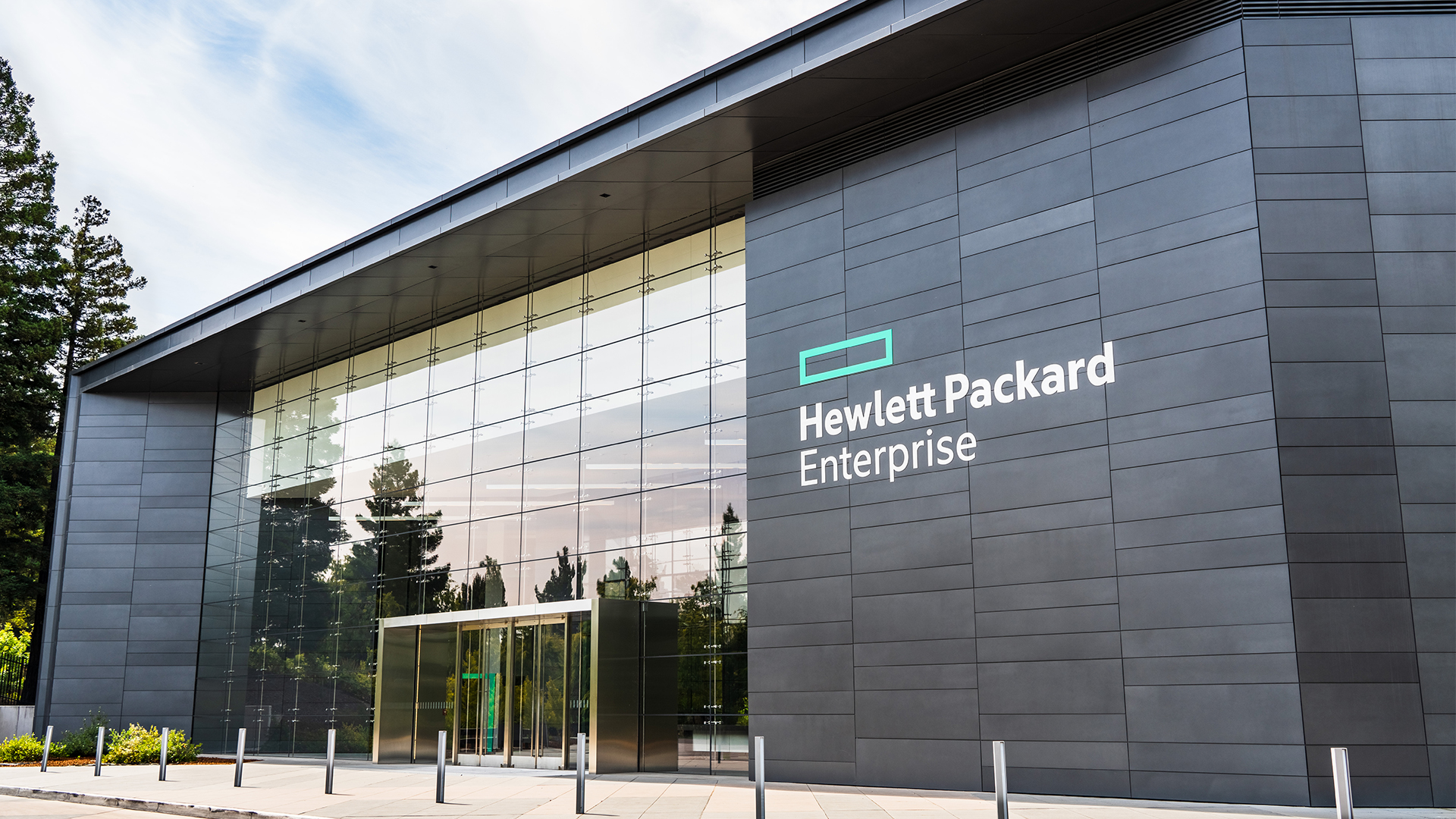Breaking down barriers
Data silos are the enemy of business progress and digital transformation. With HPE GreenLake, it's time to take back control

There’s a good reason we talk about data silos when talking about the problem of information segmentation in organizations. The analogy is apt not just because physical silos separate different types of grain, but they’re also completely opaque – if you’re outside, then you can’t tell what’s in the container or even how much of it there is. The same goes for data silos; having data kept separate impedes observability, which in turn can undermine your business’ performance.
Business leaders are well aware by now the data their organization generates is one of its most valuable assets, and may even have a big data analytics strategy in place. Yet the issue of siloed data persists almost across the board, whether through deliberate action or simply as a result of how technology is being used.
How much data is out there?
According to market insights firm Statista, the volume of data created, captured, copied, and consumed worldwide in 2023 is expected to hit 120 zettabytes (ZB) by the end of this year – more than 13 times the amount created ten years ago in 2013 (9ZB). Statista expects this to increase again over the next two years to a whopping 181ZB.
Not all of that data will be kept, of course. In fact, only 2% of data produced and consumed in 2020 was kept until the following year.

The question for businesses is from all this data generated, what’s useful and what isn’t? It may seem a straightforward question, but often data can be stored in several different formats and scattered across different geographies and platforms. This is what creates data silos, making it difficult to know what information you’re actually generating and storing. With new and growing data streams popping up every day, it’s increasingly hard to know what’s truly useful and what isn’t.
This isn’t just an IT problem, it’s a business problem. Unnecessary siloing can slow down digital transformation efforts and make it hard – if not impossible – to get the most out of advanced analytics, artificial intelligence (AI) and machine learning tools that can make the greatest use of your data.
Aside from impeding digital transformation and business efficiency efforts, data silos inevitably lead to problems with control and visibility. It’s much easier for a piece of information to end up where it shouldn’t if there isn’t full transparency and, like a missing piece of a jigsaw, without it you won’t have a complete picture of what’s going on in your business. The more silos there are, the more missing pieces there will inevitably be.
A transparent hybrid approach
One of the causes of data siloing can be taking a hybrid or multi-cloud approach to IT, but not in a cohesive way. This means that rather than having strategically thought out what workloads should go into a private or public cloud, which public cloud they should go in, how they should be stored, and when they should migrate between environments, it has just happened organically.

There’s nothing “wrong” with this as such – in fact, it’s a very natural way for things to evolve – but it’s a situation that will inevitably breed a lack of transparency. It also often means data isn’t actively managed, for example, a block of data may be stored in a public cloud environment because it has always been that way rather than because that’s the best place for it. On examination, though, it may become apparent that not only should this be stored on-premise because it’s more cost-effective but also, that’s where three other related pools of data are located and they should be opened up for cross-referencing and analysis. You may get more actionable insights knowing your sales data for Belgium, Luxembourg, the Netherlands, and Germany together rather than having the German data existing as a separate entity, for example.
A coherent, modern and strategic edge-to-cloud hybrid strategy that offers full transparency and a ‘single source of truth’, such as that provided by HPE GreenLake, is the answer to these problems of closed-off, opaque data silos that serve no one.
It’s when you break down these silos that you truly start to unlock business value from your data.
Partnering for success
For the past five years, HPE GreenLake has helped businesses make sense of hybrid IT. It has made it easy and cost-effective to run a private cloud that is as scalable and performant as a public cloud, with a pay-as-you-go model for usage.
One of the key plus points of HPE GreenLake has always been the transparency and control offered by the ‘single pane of glass’ interface it offers. Data can easily be tracked, moved, and controlled as it’s all accessible and manageable through the platform.
In addition, HPE recently announced HPE Ezmeral Data Fabric, which complements and works with the HPE GreenLake platform specifically to break down silos between data. By unifying different types of data no matter where they are in your architecture, you can do more with what you have. AI, machine learning, and analytics can be applied uniformly to provide you with a clear, single source of truth. It also makes it easier to manage and move data as you need to.
While some sets of data may always need to be hived off, organic and unplanned silos slow businesses. HPE GreenLake and HPE Ezmeral Data Fabric put business and IT leaders back in the driving seat, enabling you to truly see and manage the information your growing business is creating and get actionable insight from it.
Sign up today and you will receive a free copy of our Future Focus 2025 report - the leading guidance on AI, cybersecurity and other IT challenges as per 700+ senior executives
ITPro is a global business technology website providing the latest news, analysis, and business insight for IT decision-makers. Whether it's cyber security, cloud computing, IT infrastructure, or business strategy, we aim to equip leaders with the data they need to make informed IT investments.
For regular updates delivered to your inbox and social feeds, be sure to sign up to our daily newsletter and follow on us LinkedIn and Twitter.
-
 How the UK public sector could benefit from strategic channel partnerships
How the UK public sector could benefit from strategic channel partnershipsIndustry Insights Is the channel the answer to the growing cost vs budget problem facing the public sector?
-
 Microsoft wants to replace C and C++ with Rust by 2030
Microsoft wants to replace C and C++ with Rust by 2030News Windows won’t be rewritten in Rust using AI, according to a senior Microsoft engineer, but the company still has bold plans for embracing the popular programming language
-
 HPE says unified channel strategy won't force Juniper partners to generalize
HPE says unified channel strategy won't force Juniper partners to generalizeNews Does the company embrace specialists or want a full portfolio push? The answer, it seems, is both
-
 Three things I expect to see at HPE Discover Barcelona 2025 (and two I don’t)
Three things I expect to see at HPE Discover Barcelona 2025 (and two I don’t)Analysis With the conference kicking off at the Fira Barcelona next week, here are some things to look forward to
-
 HPE launches first phase of new-look Partner Ready Vantage program
HPE launches first phase of new-look Partner Ready Vantage programNews The IT giant’s freshly unified channel initiative combines its legacy programs into a single framework
-
 HPE names Phil Mottram as new global sales chief
HPE names Phil Mottram as new global sales chiefNews Mottram succeeds HPE veteran Heiko Meyer who is retiring after 38 years with the tech giant
-
 Who is Fidelma Russo?
Who is Fidelma Russo?Learn more about HPE's CTO and leader of GreenLake's success
-
 Steady progress and partner potential at HPE Discover Barcelona 2024
Steady progress and partner potential at HPE Discover Barcelona 2024Analysis With few product announcements, HPE's annual Europe event instead laid the groundwork for 2025
-
 HPE launches exclusive sovereign cloud offering for the channel
HPE launches exclusive sovereign cloud offering for the channelPartners will need HPE Sovereignty competency before they can start selling
-
 HPE Discover Barcelona 2024: All the news and updates live
HPE Discover Barcelona 2024: All the news and updates liveLive coverage of the keynote at HPE Discover Barcelona

